#hydrological
Text
森林と気候の変化が水循環に及ぼす影響と水文研究に関するワークショップと現地検討会を開催しました。We held workshops and field review meetings on the effect of forest and climate changes on the hydrological cycle and catchment hydrology.
チューリッヒ大学のイリヤ先生とマーク氏をお招きして、3月11日から15日にかけて生態水文学研究所およびその周辺地域で行っている研究やプロジェクトサイトにおいて、現地検討会を行いました。
Dr. Ilja van Meerveld and Mr. Marc Vis from the University of Zurich were invited to join us from March 11-15 for a field review meeting at the Ecohydrology Research Institute and project sites we are conducting in the surrounding area.
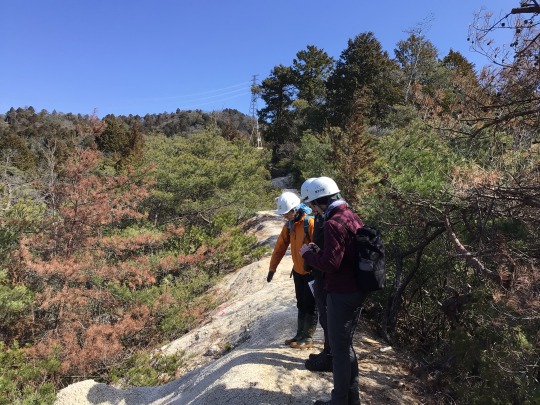
森林と気候の変化が水循環に及ぼす影響や流域水文学に関するワークショップを開催し、他大学からも水文研究を専門とする多くの研究者や学生が参加しました。
We held workshops on the effects of forest and climate changes on the hydrological cycle and catchment hydrology. Many researchers and students specializing in hydrological research from other universities also joined.

学生からの質問や議論が活発に行われ、大いに盛り上がりました。
The event was very successful, with students asking questions and engaging in lively discussions.

イリヤ先生による森林科学セミナー「森林の回復と土壌発達が斜面の流出プロセスに及ぼす影響」は対面とオンラインによるハイブリットで実施され、多くの参加者がありました。
Forest science seminar by Dr. Ilja van Meerveld, "Effects of forest restoration and soil development on hillslope runoff processes," was conducted in a hybrid format, face-to-face and online, and there were many participants.

会場で参加した研究者からも多くの質問が寄せられました。
The researchers who attended the event, asked many questions.
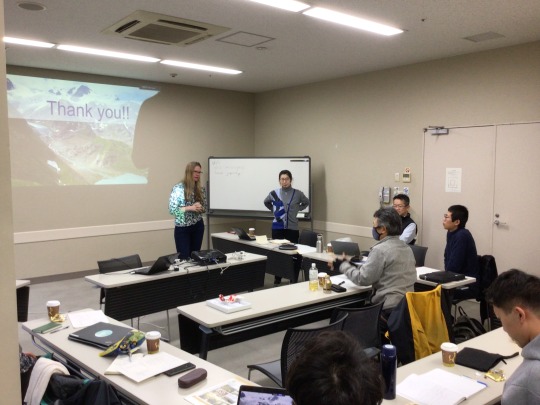
オンラインでの参加者からはパソコン越しに質疑応答をしました。
Online participants asked and answered questions over the computer.
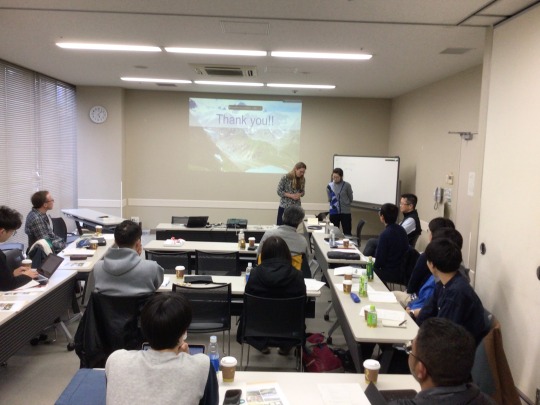
多くの参加者にとって、とても有意義なワークショップとなりました。
The workshop was very meaningful for many participants.

1 note
·
View note
Text
https://www.3dlandscape.co/dtm-for-hydrological-studies/
0 notes
Text








hydro millenium
#webcore#hydrology#2000s tech#y2k millenium#retro futurism#early 2000s#2000s nostalgia#retro futuristic#technology#vaporwave#frutiger aero#hydrogen#hydroponics#biopunk#Akira#Ghost in the Shell#Blade Runner#cybercore#cyber y2k#techcore#cyberpunk 2077#cyber aesthetic#cyberwear#cybergrunge#blue magazines#vintage magazine#2000s photoshoot#Neo Futuristic Architecture#futuristic architecture#Modernism
826 notes
·
View notes
Text
Somaliland: Localizing Hydrological Drought Early Warning Using In Situ Groundwater Sensors
This paper assesses the potential of in situ #monitoring to provide a localized index of #hydrological #drought in #Somaliland. It finds that calibrating a lumped #groundwater model with a short time series of groundwater level #observations
(more…)

View On WordPress
#Agriculture And Environment#Climate Change#Drought#Groundwater#Horn of Africa#hydrological#research#Somaliland#Somaliland drought#Water and Sanitation
0 notes
Text




9K notes
·
View notes
Text
god I just can't stop thinking about the noldor encountering running freshwater with so much iron it looks like blood while crossing the helcaraxe.
Maybe it cuts across their path, one last silent urge to turn back from ulmo and aule
Maybe it runs alongside their path, at least part of the time, the only unfrozen freshwater on the whole of the ice. Sometimes disappearing for a while, or slipping under an obstacle that they had to go miles out of their way around, but returning before desperation could set in.
#Tolkien#San shoots the breeze#Tipsyposting#I know the geology/hydrology is purest fantasy here#I'm in it for the imagery of like#Aredhel dressed in all white skins and furs. Helping people Ford the river of blood one careful step at a time#It's about angrod going to drink with hands shaking from cold and everyone looking carefully away when red drips down his front#About a narrow red rush of life in the middle of desolation
210 notes
·
View notes
Text

The Atlantic is expanding at about 10 ppm (points per month).
Geohydrotypography [Explained]
578 notes
·
View notes
Text
Researchers at the University of Tsukuba have made a groundbreaking discovery regarding the origins of non-meteoric water in natural spa waters located in central Japan. Based on numerical modeling, their results suggest that this water has been confined within the lithosphere for an extensive period of 1.5–5 million years. They identified three primary sources for this ancient water: the Philippine Sea Plate, the Pacific Plate, and ancient seafloor sediments, particularly in the Niigata and southwest Gunma regions.
Although most natural spa waters primarily originate from atmospheric precipitation, such as rain and snow (known as meteoric water), the new study, now published in the Journal of Hydrology, explored the unique qualities of certain spa waters. By analyzing the stable isotope compositions of hydrogen and oxygen in water molecules, researchers have identified distinct characteristics that indicate the presence of long-trapped lithospheric water.
Continue Reading.
140 notes
·
View notes
Text
I drew the man
The myth
The LEGEND

💧🌊✨PAANI💧🌊✨
and also a little rain frog lol
I love my little autistic hydrologist <333
#octonauts#art#octonauts fanart#redesign#octonauts paani#paani#rain frog#frog#hydrology#octo agent#water
138 notes
·
View notes
Text
ok recoil poll time (read clarification below thank you luv u)
when i say "best" i mean which one would be the most likely to get someone into recoil btw <3
#chose the more popular ones so if i missed something it's not bc i forgot or hate the song ok!!!!!!#i will lay my life down for alan wilder's whole discography#no subhuman or pre-bloodline songs bc i don't know of any instance where someone rlly got into recoil bc of those albums </3#(unless they were alr a fan when hydrology was released or whatever). but who knows!#alan wilder#recoil
38 notes
·
View notes
Text

Sorry I’ve been away, I just started my PhD in energy and environmental sciences and I know nothing about soil 😭😂👍🏻
#geology#justgeologythings#rocks#just geology things#minerals#water#fieldwork#geology memes#research#geologist#i love water#sediments#shale#stratigraphy#i love rocks#mineralogy#grad school#graduate school#hydrogeology#hydrology#phd#soil testing#soil science#delta urban soils lab
525 notes
·
View notes
Text
SCIENCE SATURDAY!
All month, I have been teaching y'all bits and pieces about the minerals known as feldspars. They are the most common minerals in earth's crust. Today, we are going to learn some of the basic chemistry behind feldspar crystallization and erosion.
FELDSPAR CHEMISTRY
Feldspars are formed as a precipitate as magmas cool. As a result, there are many different kinds. Below is a phase diagram:

Ignore B, all we care about it the colorful triangle. All right, so we have 3 endmembers: Orthoclase (kspar), Albite (sodium plag), and Anorthite (calcium plag). Then, there are all the minerals in between which have different mixed percentages of sodium, calcium and/or potassium. For example, Bytownite is 70-90% calcium and 30-10% sodium. See why there are so many types?
All right, now magma. Magmas cool at different rates for various reasons I really don't want to go into because I am a paleontologist, not an igneous petrologist and that research I don't feel like doing.

Feldspar structure: feldspars have what is called a "crankshaft" structure. We have a bunch of tetrahedrons linked by shared oxygen molecules and we make these fun hexagons.
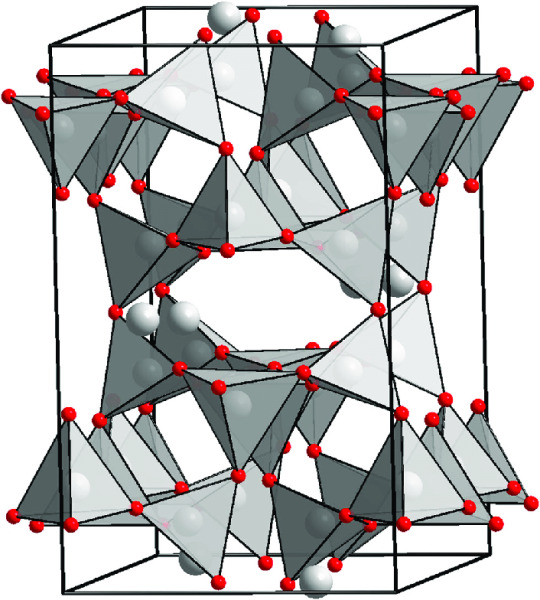
Now, the basic chemical formula is (X)AlSi3O8. What we are essentially seeing is an Al 3+ substituted in for an Si 4+ causing a charge imbalance because 3 does not equal 4. This requires additional cations (called coupled substitutions).
EXAMPLE: Al 3+ and Na+ or K+ OR 2Al 3+ and 1 Ca 2+
Where is the aluminum? That depends on the temperature of our magma! High temperatures make the position more random while low temps make it more ordered.
If we look at kspar (geologists are lazy and potassium feldspar is a lot to say) we have a K-Al coupled substitution with three polymorphs controlled by temperature and ordering. If we set up a graph where the y-axis is cooling rate and the x-axis is order, we would see the feldspar Sanidine has the lowest order and the fastest cooling and Microcline has the highest order and the slowest cooling while Orthoclase is somewhere in the middle.

Plagioclase has a complete solid solution between the endmembers Albite and Anorthite as I described earlier. Things to note are temperature (once again) plays an important role. Albite forms in low temp magma (800 degrees Celsius) and Anorthite forms in high temp magmas (1100 degrees Celsius). Yes, I know, 800 is a lot but not as mush as 1100 so deal.

They also contain different amounts of silica (SiO2). Albite is 75% silica while Anorthite only has 50%. Anorthite is also the first felspar mineral to crystallize in cooling magma.
HYDROLYSIS
This is the chemical weathering of feldspars into clays such as illite, kaolinite, and smectite.

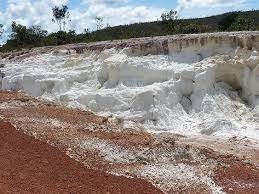

(That last one overlooks the dinosaur site I work at).
Due to the high temps that feldspars form at, they are not very stable at the surface. Therefore, they weather extraordinarily easily. Hydrolysis happens when water reacts with feldspar minerals (basic or acidic water works best because IONS). The feldspars are dissolved and then produce new ions in solution (K+, Ca2+, Na+).
Here is an example:

And now you know a little bit about the chemistry of feldspars!
35 notes
·
View notes
Text







fight club
#webcore#hydrology#2000s tech#y2k millenium#retro futurism#early 2000s#2000s nostalgia#retro futuristic#technology#vaporwave#frutiger aero#hydrogen#hydroponics#biopunk#Akira#Ghost in the Shell#Blade Runner#cybercore#cyber y2k#techcore#cyberpunk 2077#cyber aesthetic#cyberwear#cybergrunge#blue magazines#vintage magazine#2000s photoshoot#Neo Futuristic Architecture#futuristic architecture#Modernism
704 notes
·
View notes
Text

The Mississippi River and its tributaries
20 notes
·
View notes
Text
Atmospheric Rivers and Drought: It’s More Complicated Than You Think
In recent weeks, the West Coast has been hit with multiple atmospheric rivers and bomb cyclones, causing massive storms, torrential rain, and the floods and landslides that often result. This includes areas of California that have been hit incredibly hard by drought over the past several years.
I’ve seen a lot of people elated that the snowpack on California’s mountains has been increasing at record speeds. And reservoirs are the highest they’ve been in years. These are certainly excellent silver linings amid the tragedy and loss of life brought by flooding, and in the short term they’ll bring some much-needed relief. Unfortunately, they aren’t going to bring California–and the rest of the West–out of the current drought.

You may have learned in school that the basic water cycle consists of evaporation, condensation, and precipitation. Which is all true, of course. But there’s a lot more to hydrology than that.
Hydrology can be defined as how water is captured, held, and safely released by the land. For instance, here in the Pacific Northwest (west of the Cascades, anyway) we’re accustomed to a long rainy season that starts in fall, goes all the way through winter, and in some years persists almost to summer. There are plenty of rainy days–not the heavy downpours we’ve been seeing, but a mix of steady rain, drizzles, and mists.
Once the rain hits the ground, the soil soaks it up like a sponge. Soil is made of a mix of eroded bedrock and decayed/decaying organic matter; the more organic matter in the soil, and the thicker the soil, the more water it can hold. Some of the water trickles through the soil to be released into streams and rivers above ground. The inherent sponginess of our soil slows the water down enough that some of it also sifts down into groundwater stores.
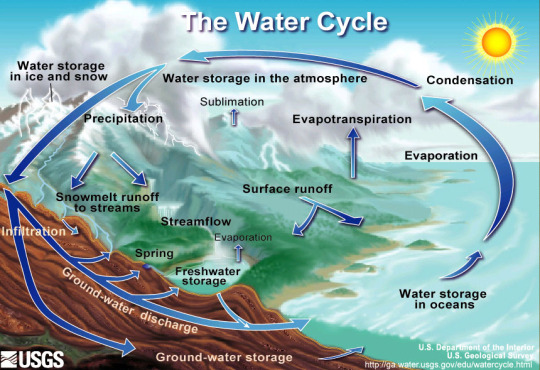
It’s the same thing in drier areas, too. Arid zones like the Northwest east of the Cascades, or large portions of central and southern California, don’t typically receive as much precipitation, and the soil doesn’t have as much absorbency. But the basic hydrological cycle is the same, and in a normal rain year groundwater reserves are replenished along with the snowpack and reservoirs.
The problem is that the atmospheric rivers and other massive storms that have been hitting the West Coast more frequently in recent years are too much for our natural hydrological system to handle. It’s like the difference between watering a garden with a sprinkling can versus a high-powered nozzle at full blast. Too much water falls at once; the soil becomes saturated more quickly, at which point it can no longer absorb any more rain.
Because more water is falling in a shorter period of time, the excess rain flows off the surface of the ground, no longer slowed by soil. This leads to increased flooding, and the super-saturated soil is more likely to create massive landslides. Although the reservoirs are able to capture some of the rain, there’s a lot that’s simply escaping downstream.
The soil is still sending some water down into the groundwater system. But the precipitation is concentrated into smaller periods of time during violent storms instead of stretched out over weeks of intermittent to steady rain. That means that by the time the soil has offloaded its excess water, the storm has passed and another dry period begins. Ultimately less precipitation is making it down through the soil into groundwater stores.

One storm won’t refill groundwater, either; often these aquifers and basins take years or even decades to fully recharge. Keep in mind that groundwater across western half of the United States has been used at a much higher rate than it replenishes for many decades due to the demand for water for agriculture, industry, and a rapidly growing population. These demands aren’t going away, either; they’ll continue sucking down water until everything runs dry.
And the larger snowpacks? Unfortunately, the hotter summers mean that they will still be melting faster than normal. The extra depth means that we’ve got more padding than we did a year ago, but it isn’t going to fix everything; it just buys us a little more time.
Both the drought and atmospheric rivers are symptoms of a larger problem: climate change. The higher average global temperatures are wreaking havoc on weather patterns, causing greater and more frequent extremes.
A lot of this is because warmer air can hold more humidity, which has a direct effect on how much precipitation is dropped by storms. The warming of both the atmosphere and the oceans leads directly to more powerful storms. Conversely, because precipitation events are concentrated into shorter periods of time, coupled with higher temperatures overall, we’re seeing longer and more extreme droughts worldwide.
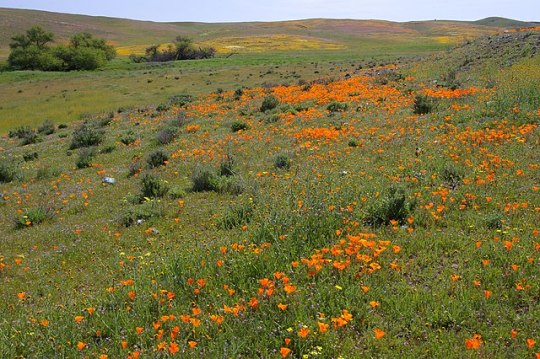
All of this doesn’t mean you can’t be happy about the immediate relief given by higher reservoir levels and snowpack increases. After all, I’m pretty happy about the fact that some lives will certainly be saved because of it. This is legitimately a good turn of events, even if it came out of something awful. And who knows? Maybe there will be other little silver linings along the way; after all, rain sometimes brings super blooms of wildflowers.
My suggested takeaway from this article is: be balanced in your approach to climate news. Yes, we need to stay as motivated and engaged as we realistically can in the fight for a better climate future, and not let the momentary successes lull us into thinking the battle is over. But it’s really important for us to celebrate the wins we do get. Allowing ourselves to focus on good news can help increase emotional resilience and provide a much-needed break from doom and gloom headlines. In short: you aren’t ignoring the problems if you give yourself some time to think about something else, and in fact changing your mental channel for a while is a crucial act of self-care.
And then, when you feel ready to engage again, just remember that not all is lost, and there’s still plenty left to keep fighting for.
Did you enjoy this post? Consider taking one of my online foraging and natural history classes or hiring me for a guided nature tour, checking out my other articles, or picking up a paperback or ebook I’ve written! You can even buy me a coffee here!
#long post#flooding#climate change#drought#California#anthropogenic climate change#environment#environmentalism#conservation#weather#climate#rain#water#soil#hydrology#science#nature#scicomm#science communication
141 notes
·
View notes